Marketers invest a lot of money and resources on their websites to deliver high intent leads to sales.
But, guess what? 81% of tech buyers don’t fill out forms when they encounter gated content online. And 58% of companies don’t follow up with those who do fill out forms. Which means your future customers are slipping through the cracks.
The traditional marketing qualified lead (MQL) process hurts both you and your buyers.
But you can fix what’s broken. Conversational Marketing is the best way to start personalized and real-time conversations with your buyers. Today, I’m here to share the four most effective ways to introduce Conversational Marketing to your business, featuring success stories from Validity, Tenable, Lacework, and Okta.
Our team recently spoke about these strategies on a Drift webinar. If you want to watch the recording, here’s the full presentation: Accelerate Pipeline Through the Power of Data & Conversations. Otherwise, keep reading for all the insights 💡
1. Validity Increased Pipeline by 35% with Conversational Forms
Forms alone are no longer good enough for interacting with buyers. But we know it isn’t always possible for companies, especially enterprises, to immediately rip out all the forms on their website.
Conversational forms are a hybrid solution. Drift Fastlane allows you to take your existing forms and make them more human.
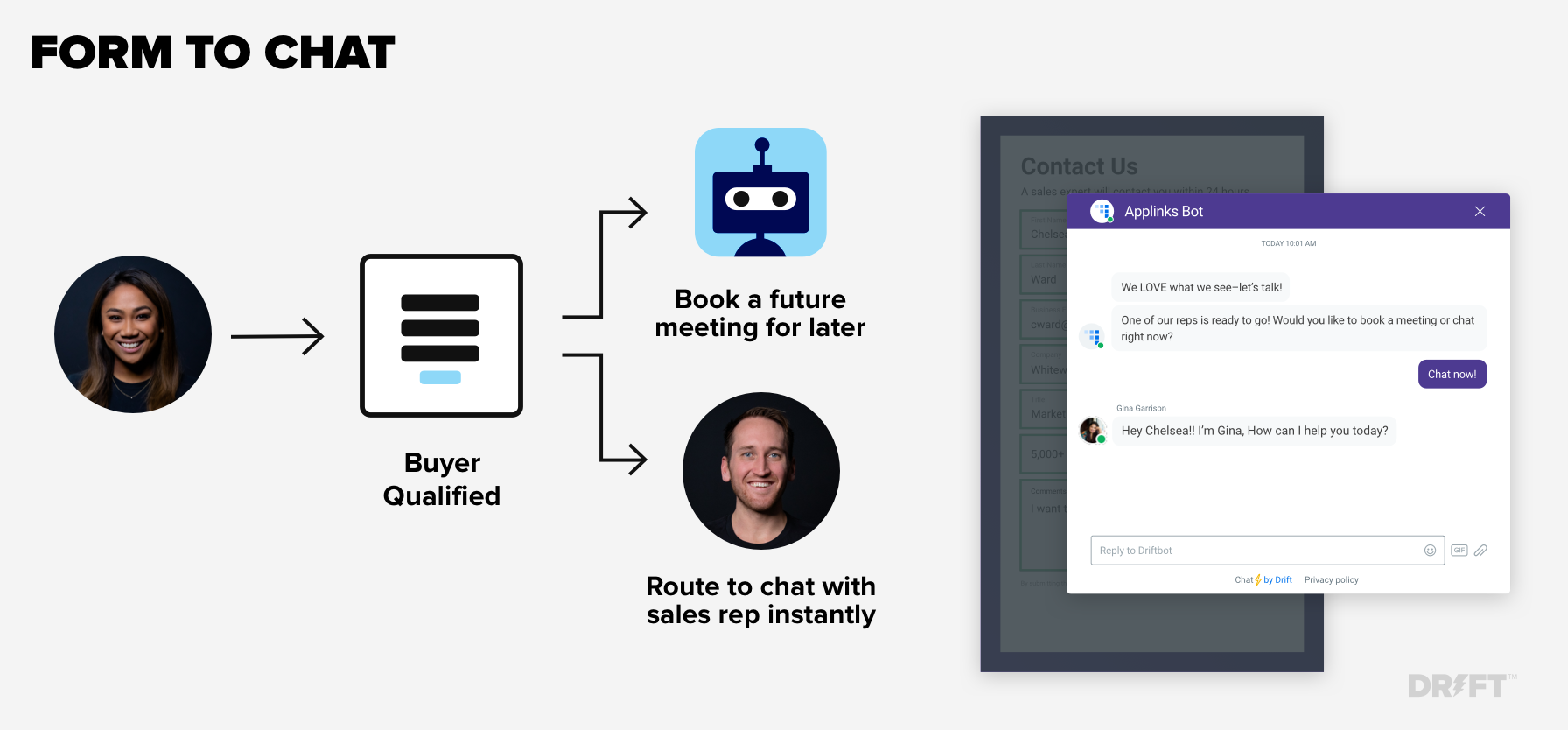
When a buyer fills out a traditional form on your site, the data can sometimes take days to process. By surfacing a bot immediately after the buyer has filled out your form, you eliminate that wait time. Instead, you’re able to fast-track qualified buyers to sales immediately or schedule a future meeting via chat. This way, you can give your buyers the VIP experience.
Validity, a trusted name in customer data quality, recently implemented Fastlane. As you can see, once a qualified buyer fills out the form on Validity’s ‘Schedule a Demo’ page, a bot appears.

In only two months, Validity saw a massive 35% increase in pipeline.
2. Tenable Delivered High-Quality Leads to Sales 3x Faster with Live Chat
Live chat allows buyers and customers to chat online in real-time. Live chat is a great way to facilitate human interactions in our digital world. (We recommend using live chat over chatbots for buyers you know are qualified, like target accounts. Otherwise, it can become hard to scale.)
With live chat, your buyers are never left waiting. Your sales team will never be overwhelmed with high volumes of lead forms. And leads that are a great fit will never slip through the cracks.
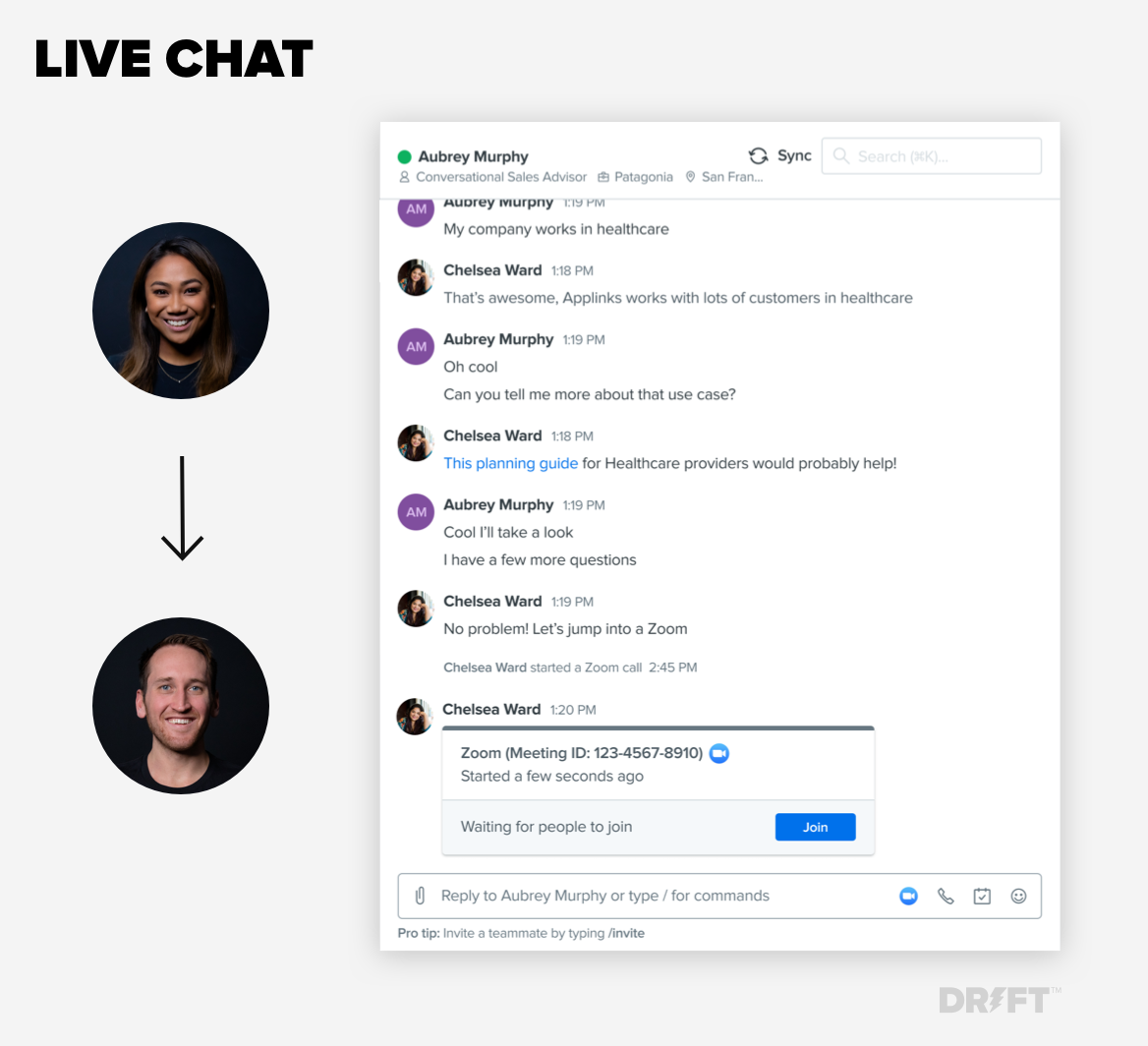
When Tenable, a cybersecurity company, began using live chat, they found themselves working with greater speed and efficiency.
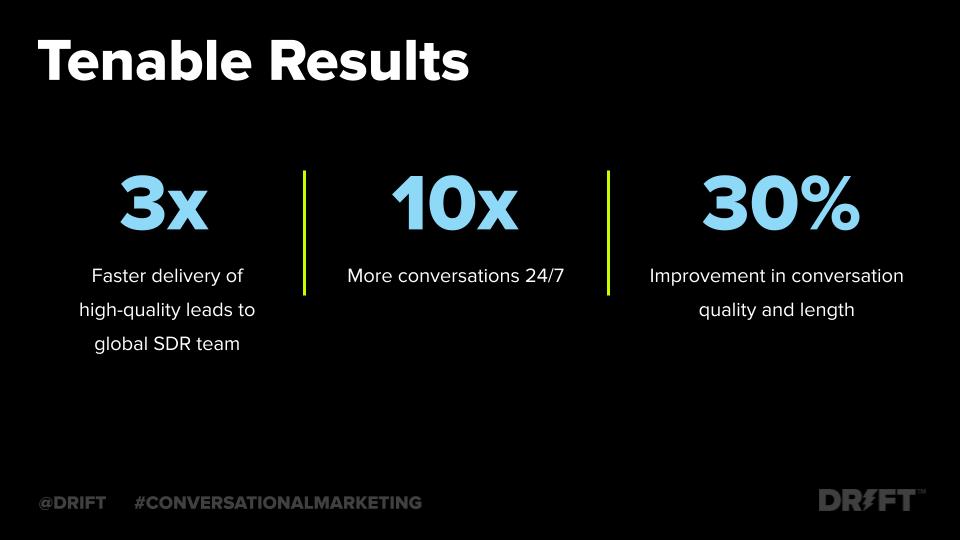
Using live chat, Tenable began delivering high-quality leads to global sales development reps (SDRs) faster. This meant that their marketing and sales teams were better aligned. (A goal that we all share!)
Tenable also succeeded in shortening their response time to less than 60 seconds.
3. Lacework Drove $7M in Marketing Sourced Pipelined with Chatbots
Chatbots are nothing new to marketers. But understanding how to effectively use them is a whole other game.
With chatbots, your main objective is to guide your buyer to a specific outcome, whatever that may be. If they’re an account-based marketing (ABM) account, you might connect them to a sales rep. If they’re looking for a piece of content, you might help them find the most updated version of that content or schedule a demo.
You can see this in action in the example below:
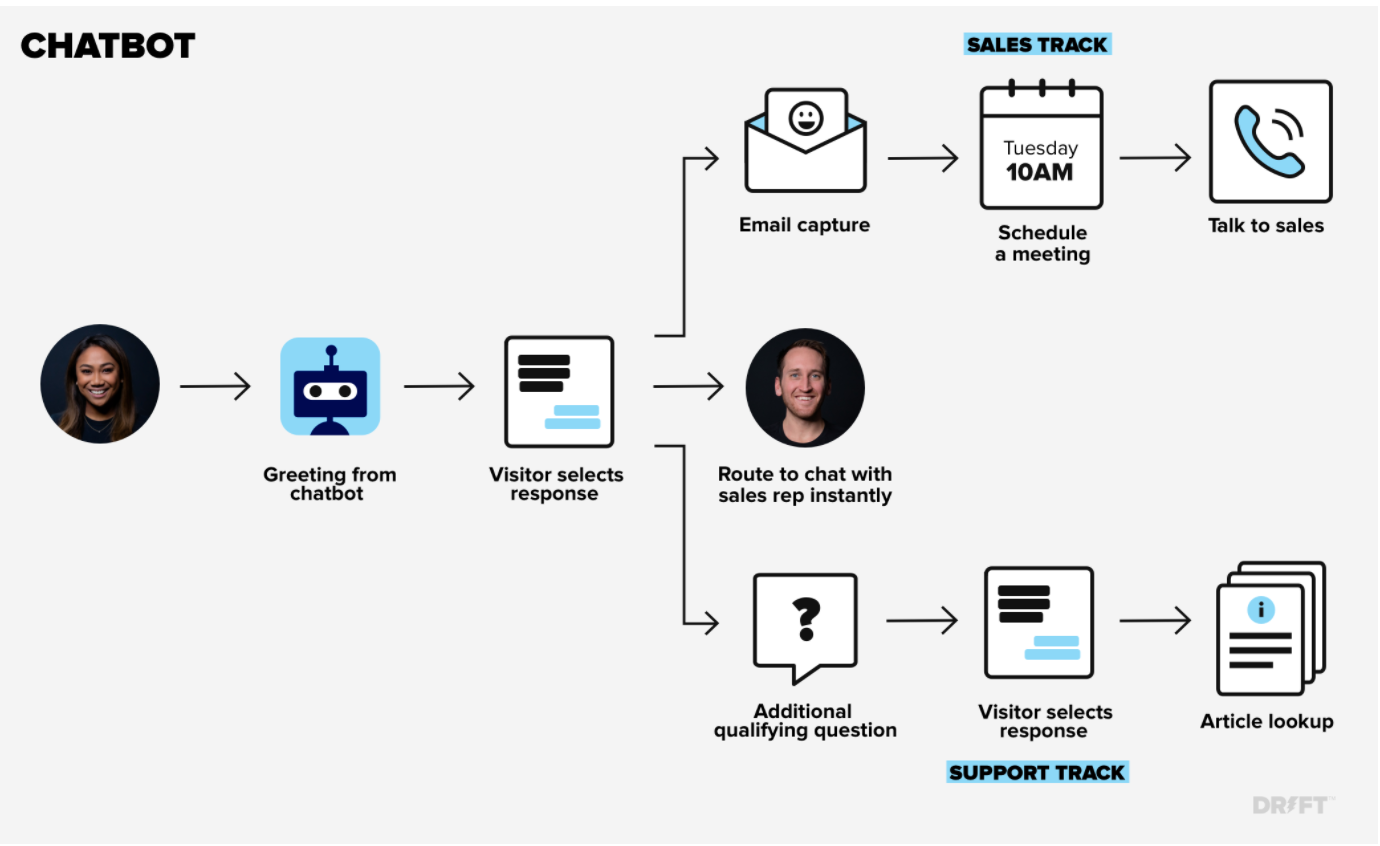
Here’s a more specific case. The security platform, Lacework, has fully embraced Conversational Marketing, using chatbots to loop a sales rep into conversations with ABM prospects as soon as they come to their site. If a sales rep isn’t available to talk, the chatbot is able to schedule a meeting right then and there.
This strategy has been key for Lacework. And the results speak for themselves:
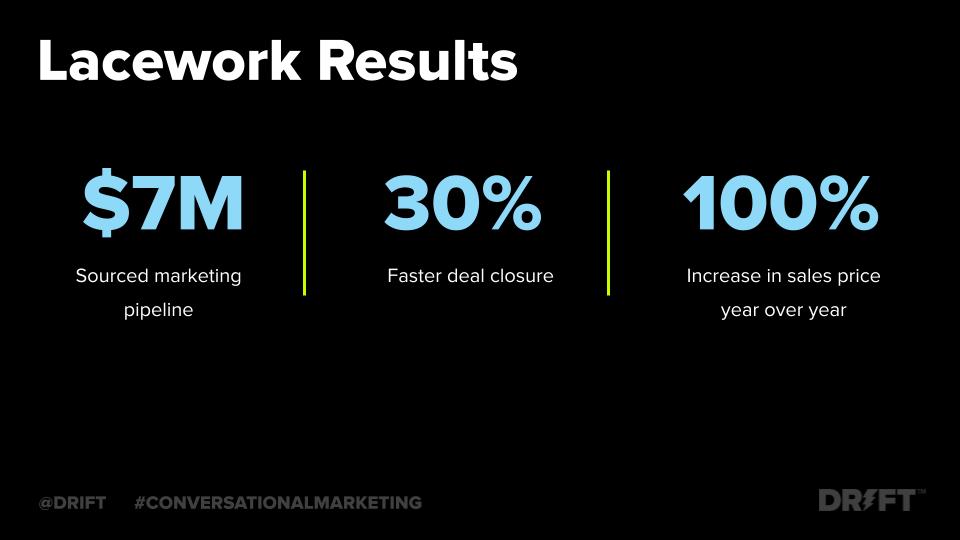
By using Conversational Marketing in lieu of the long process of qualifying leads through emails and forms, Lacework also tripled their number of booked meetings.
4. Okta Doubled MQL to SQL Conversion Rates with ai chatbots
Rule-based chatbots are confined to tightly controlled chat experiences. On the other hand, AI chatbots provide more flexibility.
VSAs operate using a process called natural language processing (NLP), using both AI and human data. The goal of NLP is to teach computers to understand natural languages — in other words, languages that humans use to communicate with one another. NLP allows VSAs to become smarter over time so that they can respond like your best SDRs or CDRs (conversation development reps).
VSAs engage qualified buyers, working on behalf of your reps 24/7. They turn your website into a lead engine by conversing with buyers beyond the traditional 9-5.
Here’s what happened when identity and access manager Okta began using VSAs in their strategy:
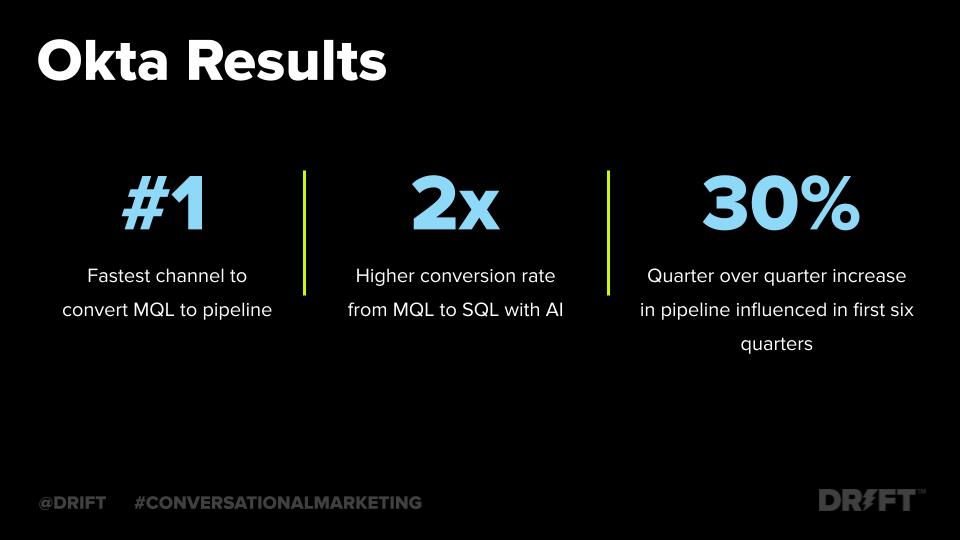
Overall, VSAs helped Okta drive more pipeline and conversations from their website traffic.
Final Thoughts
If you’re still uncertain about implementing Conversational Marketing, ask yourself this: Is your funnel really working? Are you seeing high conversion rates? Are your sales reps frequently wondering why they have a MQL that isn’t ready to buy?
It’s time to rethink your funnel.
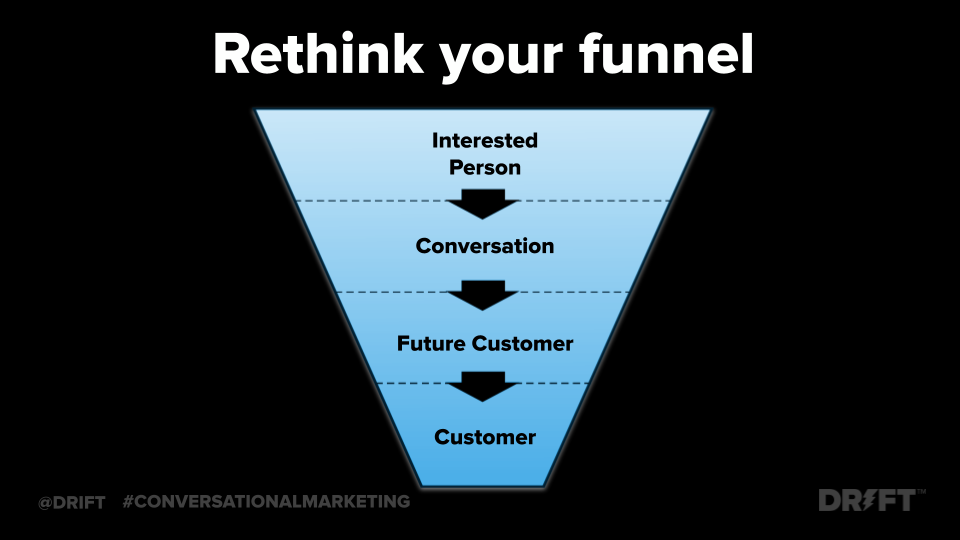
MQLs are antiquated. Conversational Marketing is the future of frictionless buying experiences. Use the power of conversations and data to engage with buyers in real-time and accelerate your pipeline.








